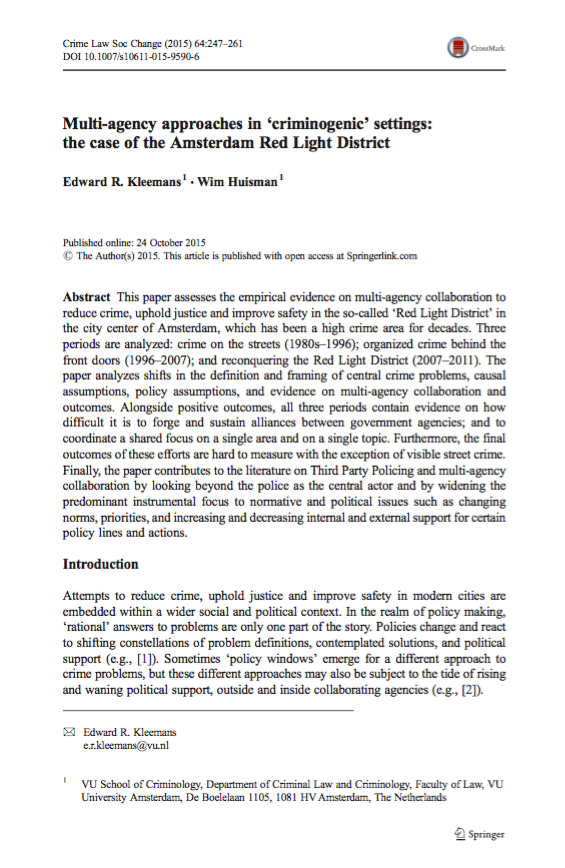
Multi-agency approaches in ‘criminogenic’ settings: the case of the Amsterdam Red Light District
This paper assesses the empirical evidence on multi-agency collaboration to reduce crime, uphold justice and improve safety in the so-called ‘Red Light District’ in the city center of Amsterdam, which has been a high crime area for decades. Three periods are analyzed: crime on the streets (1980s–1996); organized crime behind the front doors (1996–2007); and reconquering the Red Light District (2007–2011). The paper analyzes shifts in the definition and framing of central crime problems, causal assumptions, policy assumptions, and evidence on multi-agency collaboration and outcomes. Alongside positive outcomes, all three periods contain evidence on how difficult it is to forge and sustain alliances between government agencies; and to coordinate a shared focus on a single area and on a single topic. Furthermore, the final outcomes of these efforts are hard to measure with the exception of visible street crime. Finally, the paper contributes to the literature on Third Party Policing and multi-agency collaboration by looking beyond the police as the central actor and by widening the predominant instrumental focus to normative and political issues such as changing norms, priorities, and increasing and decreasing internal and external support for certain policy lines and actions.
